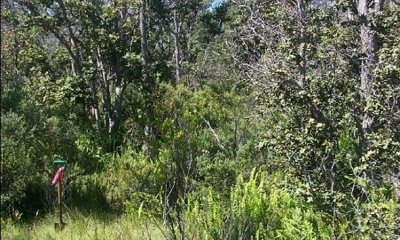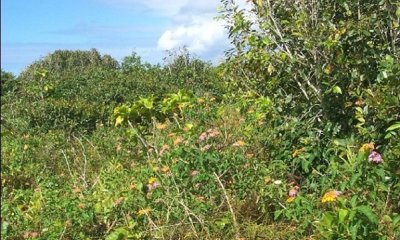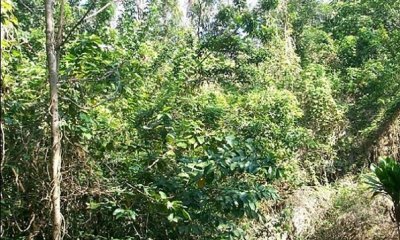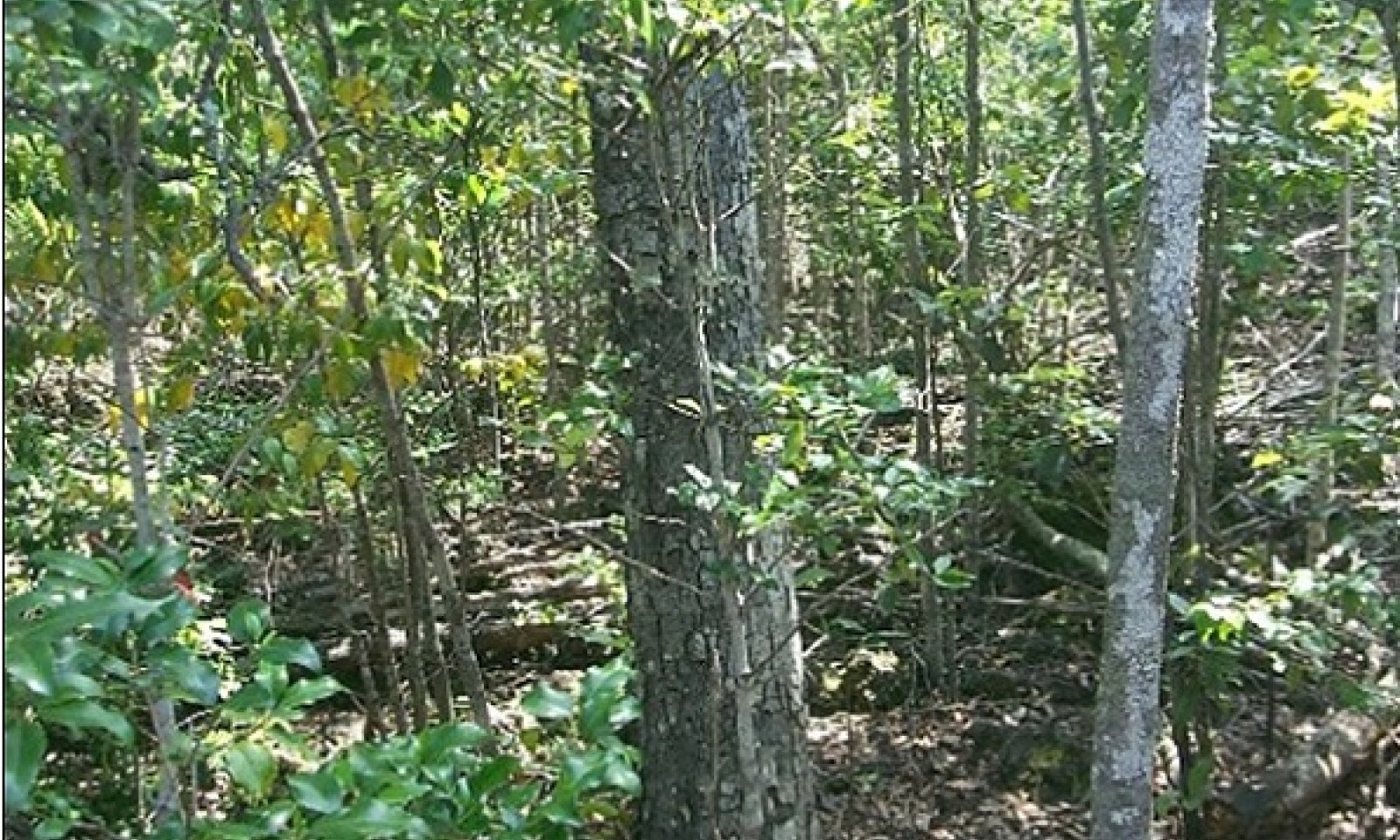
Kona Weather Ustic Forest
Scenario model
Current ecosystem state
Select a state
Management practices/drivers
Select a transition or restoration pathway
- Transition T1A More details
- Transition T1B More details
- Restoration pathway R2A More details
- Transition T2A More details
- Transition T2B More details
- Restoration pathway R3A More details
- Transition T3A More details
- Restoration pathway R4A More details
- Transition T4A More details
- Restoration pathway R5A More details
- Restoration pathway R5B More details
-
No transition or restoration pathway between the selected states has been described
Target ecosystem state
Select a state
State 1
Reference State




Description
This state consists of one community phase. The general appearance of this ecological site is an open to nearly closed canopy of medium to tall height to 40 feet (12 meters) when dominated by lama (Diospyros sandwicensis) or to 70 feet (22 meters) when dominated by ohia lehua, an understory of shrubs and small trees, and a ground layer of vines, forbs, and grasses. Lama-dominated stands have standing live timber of 400-1500 cubic feet per acre; stands dominated by ohia lehua range from 400-2300 cubic feet per acre.
The canopy becomes shorter and sparser where the forest grades into drier coastal areas. Where the forest grades into wetter forests at higher elevations the canopy can be dominated by a transitional forest dominated by olopua (Nestegis sandwicensis) and papala kepau (Pisonia brunoniana). This transitional species assemblage occurs within the same soil map components as the rest of the ecological site. For mapping, it found in the lowest elevations of F161BY502 Kona Weather Udic Forest on westward-facing slopes in Kona and parts of Kau and in the highest elevations of the Kona Weather Dry Forest on southeastward-facing slopes in Kau.
Submodel
Description
This state consists of one community phase having an open canopy of common native trees with an understory of introduced grasses, ferns, vines, small trees, and shrubs. Foraging by feral or domestic ungulates removes native understory plants and prevents regeneration of overstory species, resulting in a mature and diminishing canopy of native trees. This may occur more gradually by weed invasion into intact native forest. The understory of this plant community contains fine fuels that are susceptible to wildfire.
Submodel
State 3
Naturalized Grassland State
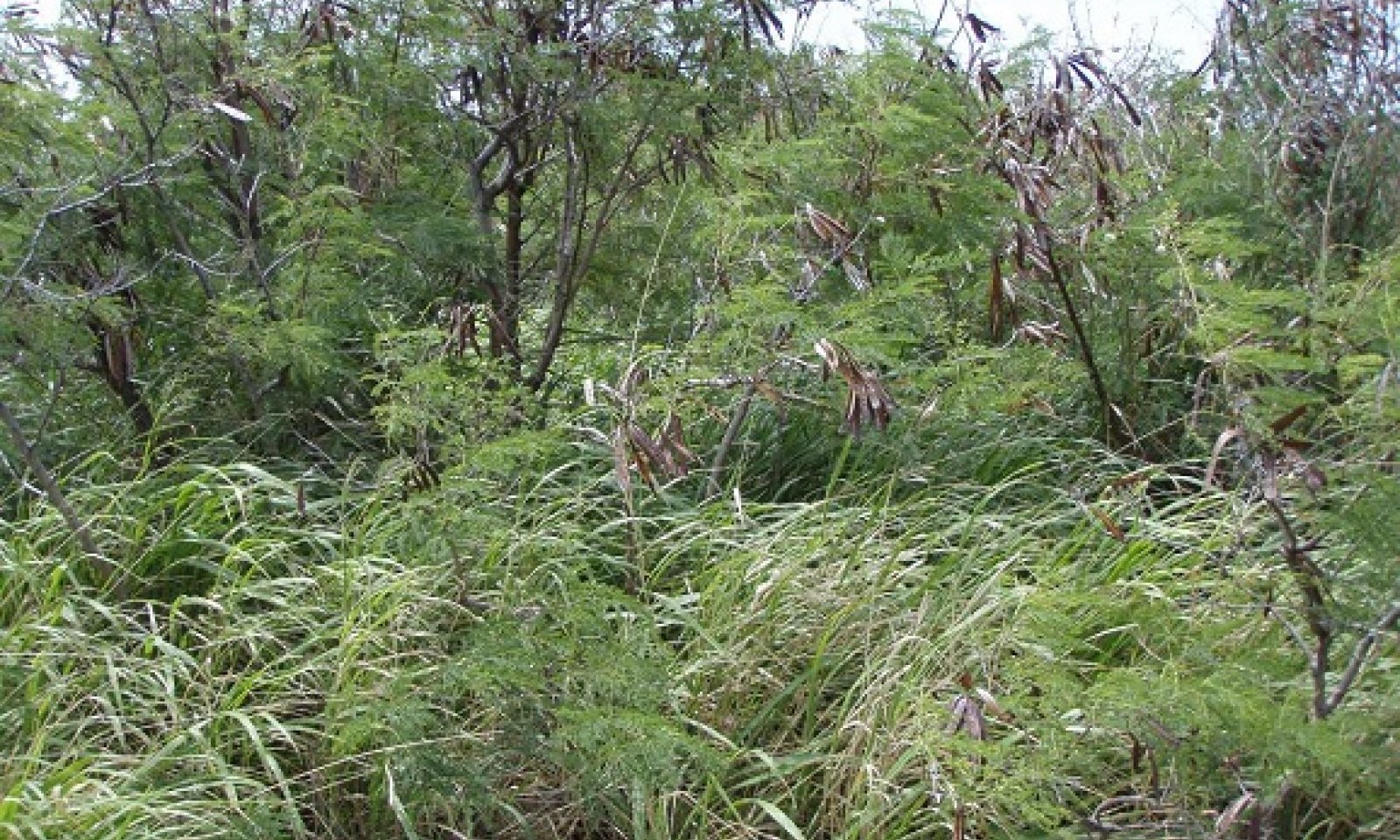



Description
This state consists of two community phases. It is naturalized grassland with introduced grasses, forbs, and trees. Scattered, large trees are often present. Some grasslands are on moderately deep and deep ash soils on former sugarcane plantations. Others were cleared from the original forest, and in many cases the underlying lava rock was ripped and crushed by heavy machinery to produce Ustarents (seasonally dry, sandy, organic soils). Ripping and crushing produces some fine mineral particles and reduces gap sizes between the rocks. However, about 50% of the soil organic matter may be lost in the process due to exposure to air and higher temperatures.
This grassland evolved in recent history, and most of its constituent naturalized plants evolved in ecosystems in which herbivory and wildfire were important factors. Because this site can border along the ocean or contains gulches that reach the ocean, grass should be managed to control the movement of sediment from water erosion to meet current and future objectives of coastal zone management. Good vegetative condition is maintained with prescribed grazing and suppression of wildfire.
Submodel
Description
This state consists of one community phase. It may have developed from abandoned grazing land, land cleared by wildfire, or even long-abandoned Polynesian farmland. Shrubs are dominant in canopy cover and stature. Typically, an array of introduced grass species is present. There is a moderate but increasing cover of small trees, some which potentially can grow to large stature. This tree cover creates the potential for a transition to State 5 Exotic Tree Invaded.
Submodel
Description
This state is comprised of one community phase dominated by introduced trees. Density and composition of understory shrubs, forbs, and grasses varies greatly with overstory closure and height, which affects the susceptibility of this plant community to fire. The density, vigor, and biomass of introduced vegetation can be very high, making restoration to other states expensive and difficult.
Submodel
Mechanism
State 1 Reference transitions to State 2 Invaded Understory through grazing, browsing, rooting, and trampling by domestic or feral ungulates (cows, sheep, goats, and pigs). These activities destroy small native plant species and seedlings and saplings of large species. Regeneration of the native forest is prevented, leading to tree populations consisting almost entirely of mature plants. Lack of competition from native plants, introduction of weed seeds, and disturbance of the soil lead to an understory dominated by introduced plant species. Weeds can invade intact native forest even in the absence of ungulates and gradually bring about the transition. In particular, invasive vines, shrubs, and small trees will grow under intact native canopies and begin to degrade the forest. Eventually introduced grasses fine fuels that can carry catastrophic wildfires that destroy the native tree canopy.
Mechanism
State 1 Reference transitions to State 3 Naturalized Grassland by clearing the forest with heavy machinery and planting desirable forage species. Where organic soils are very shallow or shallow over lava substrates, underlying lava rock may be ripped and crushed by heavy machinery to produce Ustarents (seasonally dry, sandy, organic) soils. Ripping and crushing produces some fine mineral particles and small, abundant gaps between rock fragments, producing a suitable rooting medium for many plants. About 50% of the soil organic matter may be lost in the process due to exposure to air and higher temperatures.
Mechanism
State 2 may be restored to State 1 Reference, or to a facsimile of the Reference State, by removal of the introduced understory through application of herbicides and/or hand weeding. Reintroduction of native understory species is required. The site must be fenced securely to exclude ungulates.
Mechanism
State 2 transitions to State 3 Naturalized Grassland by land clearing with heavy machinery followed up by weed control. Land clearing would probably promote germination of the weed seed bank in the soil, requiring herbicidal control. After clearing and weed control, the site would be planted to forage species.
Mechanism
State 2 transitions to State 5 Exotic Tree Invaded by growth of introduced tree species through and above the native canopy. Lack of reproduction leads to gradual loss of most native tree species.
Mechanism
It may be possible to restore State 3 to a plant community resembling State 1 Reference. Weed control would be applied to forage species and the many opportunistic plant species that would invade the site. Weed control would be a perpetual process to maintain the site. Fire and domestic and feral ungulates would have to be excluded. Extensive planting of native species would follow. On sites where the soils have been converted to Ustarents by ripping and crushing by heavy machinery, restoration of at least some native species is possible (Jill Wagner, personal communication). Ustarents appear to be a very favorable seedbed for weeds.
Mechanism
State 3 transitions to State 4 Shrub Invaded Grassland after abandonment and, if wildfires do not occur, gradual invasion of weedy shrubs and small trees. If the site contained abundant koa haole before abandonment, these small trees will overtop the guineagrass and greatly increase their cover.
Mechanism
This state can be restored to State 3 Naturalized Grassland by brush management with follow-up control of resprouting shrubs and emerging weedy forbs. Forage species may then be replanted and maintained by prescribed grazing. For large, densely weedy sites or if fast results are not required, it is possible to eliminate invasive small trees, shrubs, and undergrowth by planting glycine (Neonotonia wightii) to overtop and shade out weeds; this is done in conjunction with foraging by sheep and goats to consume smaller weeds. Eventually, the dead trees and shrubs collapse under the weight of the glycine; the glycine is then eaten by the livestock. This process takes about eight years (Gordon Cran, Kapapala Ranch, personal communication, 2006).
Mechanism
This state transitions to State 5 Exotic Tree Invaded with lack of wildfire. Fast-growing introduced tree species invade Shrub Invaded Grassland and quickly overtop shrubs.
Mechanism
It may be possible to restore this state to a community resembling State 1 Reference. Total clearing of the site would be necessary. Alternatively, it may be worthwhile to kill taller weed species in place by herbicide applications in order to provide some shelter from the sun. If clearing is done by heavy machinery, soil disturbance would occur. This would produce unknown conditions with regard to native plant establishment and probably induce germination of the weed seed bank and increase the potential for soil erosion and loss of organic matter by oxidation. Weed control and brush management would be long-term. Fire and ungulates would have to be excluded.
Heavy machinery use can be avoided in the case of christmasberry trees by killing the trees with glycine vines coupled with sheep and goat browsing, a process that takes about eight years (Gordon Cran, Kapapala Ranch, personal communication, 2006). Glycine would have to be eliminated later by grazing and herbicides before forest restoration could be successful.
Mechanism
This state may be restored to State 3 Naturalized Grassland. Total clearing of the site would be necessary. If clearing is done by heavy machinery, soil disturbance would occur. This would probably induce germination of the weed seed bank and increase the potential for soil erosion and loss of organic matter by oxidation. Weed control and brush management must then be applied multiple times to control new weed germination and resprouting. After clearing and weed control, the site would be planted to forage species. Ungulates would have to be excluded until forages are well established; prescribed grazing must then be applied.
Heavy machinery use can be avoided in the case of christmasberry trees by killing the trees with glycine vines coupled with sheep and goat browsing, a process that takes about eight years (Gordon Cran, Kapapala Ranch, personal communication, 2006). Glycine would have to be eliminated later by grazing and herbicides before forest restoration could be successful.
Model keys
Briefcase
Add ecological sites and Major Land Resource Areas to your briefcase by clicking on the briefcase (![]() ) icon wherever it occurs. Drag and drop items to reorder. Cookies are used to store briefcase items between browsing sessions. Because of this, the number of items that can be added to your briefcase is limited, and briefcase items added on one device and browser cannot be accessed from another device or browser. Users who do not wish to place cookies on their devices should not use the briefcase tool. Briefcase cookies serve no other purpose than described here and are deleted whenever browsing history is cleared.
) icon wherever it occurs. Drag and drop items to reorder. Cookies are used to store briefcase items between browsing sessions. Because of this, the number of items that can be added to your briefcase is limited, and briefcase items added on one device and browser cannot be accessed from another device or browser. Users who do not wish to place cookies on their devices should not use the briefcase tool. Briefcase cookies serve no other purpose than described here and are deleted whenever browsing history is cleared.
Ecological sites
Major Land Resource Areas
The Ecosystem Dynamics Interpretive Tool is an information system framework developed by the USDA-ARS Jornada Experimental Range, USDA Natural Resources Conservation Service, and New Mexico State University.

